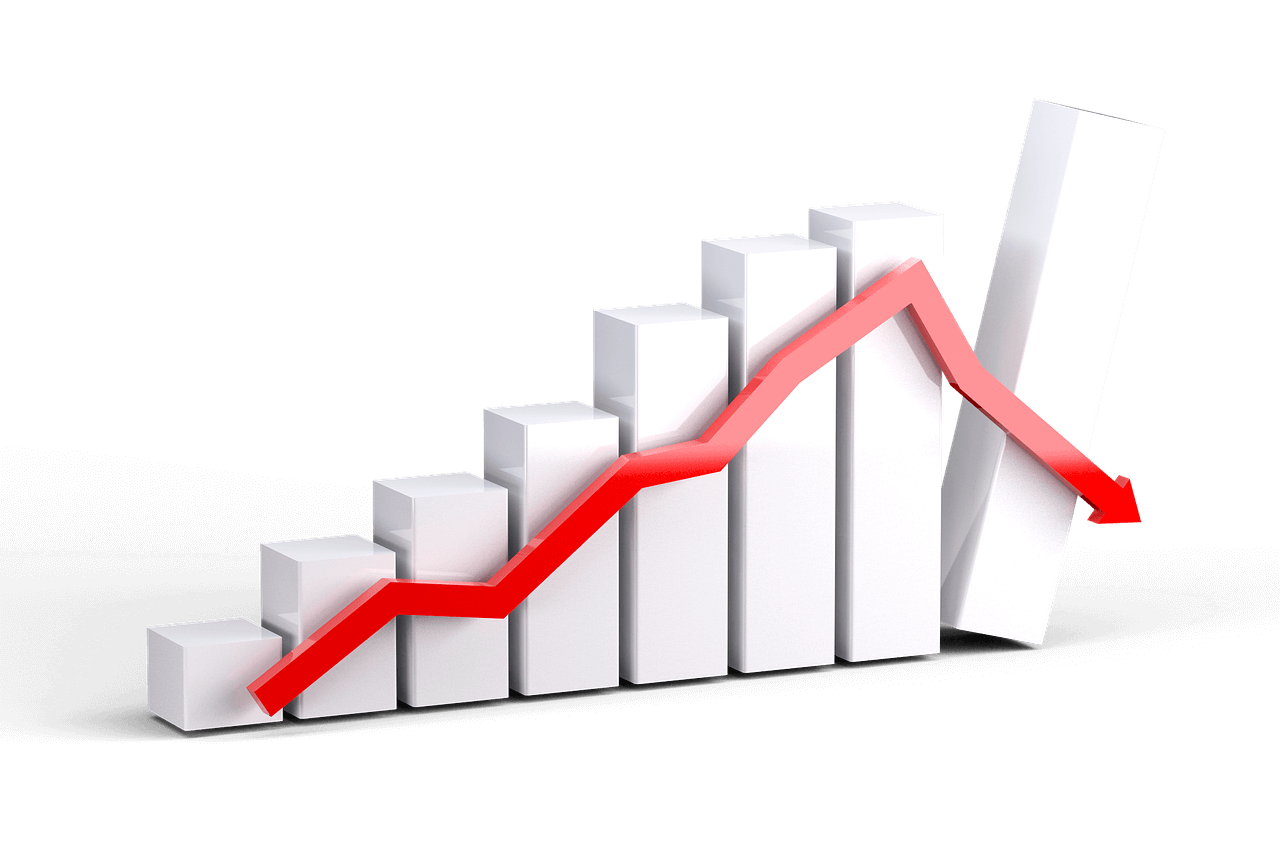Low Sales: Reasons & Solutions for Your Business
Summer Nguyen | 06-04-2023

Picture this: you’ve crafted attractive offerings, invested in marketing campaigns, and eagerly awaited the influx of customers.
However, the response falls short of your expectations, leaving you scratching your head and asking where you went wrong. Low sales can feel like a dark cloud looming over your business dreams, casting doubts and uncertainties.
But before you lose hope, let’s look at potential factors contributing to low sales and how to solve them! This guide will highlight the reasons behind low sales performance and provide effective solutions. Let’s explore!
Low sales meaning
Low sales refer to a situation in which a business experiences a decline or below-average level of product or service purchases, resulting in lower revenue generation compared to the expected or desired levels.

Low sales can be characterized by a noticeable decrease in customer demand, reduced transaction volumes, and a decline in overall sales revenue. Low sales can be detrimental to your business, including decreased profitability, cash flow issues, reduced market share, and limited resources for growth and expansion.
It is a relative term that varies depending on industry standards, market conditions, and individual business goals. Analyzing and addressing low sales effectively is essential to maintain business sustainability and growth.
Effects of low sales on your business
The effects of low sales on businesses can be far-reaching and have significant implications for various aspects. Here are some key effects to consider:
-
Decreased profitability: Low sales directly impact a business’s profitability by reducing revenue and potentially leading to financial losses.
-
Cash flow issues: With lower sales, cash flow can become constrained, making it challenging to cover expenses, invest in growth initiatives, or meet financial obligations.
-
Reduced market share: Low sales can result in market share loss as competitors experiencing stronger sales gain a larger portion of the market.
-
Limited resources for growth and expansion: Insufficient sales revenue can restrict a business’s ability to invest in research and development, expand into new markets, or launch new products or services.
-
Difficulty in attracting investment or securing loans: Investors and lenders may be hesitant to support a business with consistently low sales, making it challenging to access capital for growth or operational needs.
8 reasons for low sales performance
Multiple reasons can contribute to low sales performance. Understanding these reasons is vital in identifying areas for improvement and implementing effective solutions.
Let’s explore some common reasons for low sales performance!
Ineffective marketing strategy
An ineffective marketing strategy could include poorly targeted marketing efforts, where your messaging and promotions fail to reach the right audience. Consequently, it could make your sales lower than expected.

Inadequate market research may lead to a lack of understanding of your target customers’ needs, preferences, and behaviors. Weak promotional campaigns may fail to communicate the value and unique selling points of your products or services effectively.
It is essential to review and refine your marketing strategy to ensure it aligns well with your target audience and effectively conveys your value proposition.
Intense competition
Increased competition within your industry can directly impact your sales performance. If your company struggles to differentiate itself from competitors or lacks a strong competitive advantage, it can reduce sales.
To address this, analyze your competition, identify what sets you apart, and develop strategies to emphasize your unique selling points. Consider offering additional value, such as superior customer service, exclusive features, or competitive pricing, to attract and retain customers.
Product/Service misalignment
One of the key reasons for low sales performance could be a misalignment between your offerings and the needs or preferences of your target audience. If your products or services do not effectively address customer pain points or fulfill their desires, it can lead to low sales.
Conduct thorough market research to gain insights into your target audience’s preferences, behaviors, and purchasing habits. Use this data to tailor your products to meet their specific needs, ensuring a better fit between your offer and your customers’ wants.
Pricing issues
Pricing plays a crucial role in influencing purchasing decisions. Overpricing or underpricing your products or services can lead to low sales.

If your pricing plans are too high, potential customers may perceive them as unaffordable or not providing sufficient value for the cost. On the other hand, excessively low prices may raise concerns about quality or value.
Evaluate your pricing strategy by considering factors such as production costs, competitor pricing, and customer perception of value. Find a balance that aligns with market demands and provides a fair value proposition to your customers.
Poor customer experience
Do you know that businesses lose up to $75 billion due to poor customer service?
If customers encounter issues such as subpar customer service, lack of responsiveness, or negative reviews about your business, it can deter them from making purchases or recommending your products or services to others.
Focus on delivering exceptional customer service, addressing customer concerns promptly, and improving the overall experience at every touchpoint. By prioritizing customer satisfaction, you can foster loyalty, drive repeat purchases, and generate positive word-of-mouth referrals.
Economic factors
Economic downturns, recessions, or fluctuations in the market can lead to reduced consumer spending, affecting sales performance.
During challenging economic times, customers may cut back on discretionary purchases or delay buying decisions. So, adapt your strategies to changing economic conditions. Consider offering value-driven promotions, exploring new market segments, diversifying your product offerings, or adjusting pricing and payment options to accommodate customer preferences during challenging times.
Inadequate sales team training
Your sales team plays a crucial part in driving sales and revenue. If they lack the necessary skills, product knowledge, or techniques to effectively engage with customers and close deals, it can contribute to low sales performance.
Invest in comprehensive training programs or SaaS sales coaching that equip your sales team with the necessary tools to succeed. Provide ongoing support, coaching, and feedback to help them improve their performance.
Besides, encourage a customer-centric approach and empower your sales team to build relationships, address customer needs, and provide personalized solutions.
E-commerce Solution Provider
Over 119,000 global clients have achieved their goals with Mageplaza's help. It's your opportunity to do the same now!
Get Started6 effective sales techniques you should apply now
Implementing effective sales techniques is crucial to boost your sales performance and drive revenue growth. Let’s explore some proven strategies in more detail!
1. Relationship building
Building strong & healthy relationships with customers is essential for long-term sales success. It involves understanding their needs, preferences, and pain points.
Engage with customers on a personal level, whether through face-to-face interactions, phone calls, or digital communication. Show genuine interest in their difficulties and provide custom solutions that address their needs.
Building trust and rapport can increase customer loyalty, generate repeat business, and benefit from positive word-of-mouth referrals.
2. Targeted marketing
Tailoring your marketing efforts to specific customer segments can significantly impact sales.
Start by identifying your ideal target audience through market research and customer data analysis. Develop marketing campaigns that address their pain points, preferences, and motivations.

Besides, utilize digital marketing channels such as social media, content marketing, email marketing, and advertising to reach your target audience effectively. By delivering relevant messages through the right channels, you can attract qualified leads and increase the chances of converting them into customers.
3. Value-based selling
Value-based selling involves clearly communicating the unique value proposition of your products or services. It focuses on how your offerings solve customer problems, provide tangible benefits, or fulfill their desires.
Showcase the competitive advantages and distinct features that set your products/services apart from competitors. Use case studies, testimonials, and demonstrations to illustrate the value customers can gain from choosing your products or services.
You can enhance their perceived worth and drive sales by effectively articulating the value proposition.
4. Sales funnel optimization
Optimizing your sales funnel ensures a smooth and efficient customer journey, leading to increased conversions, and incorporating a system to score leads at various stages of the funnel can refine the journey by focusing efforts on high-value prospects.
Start by analyzing each stage of the funnel and identifying any bottlenecks or areas for improvement. Streamline lead generation strategies to attract high-quality leads. Implement effective lead nurturing techniques, such as personalized email campaigns, targeted follow-ups, or educational content, to build relationships and move prospects closer to a purchase decision.
Provide sales team training on objection handling, effective communication, and closing techniques to increase conversion rates. By optimizing your sales funnel, you can maximize the overall sales performance.
5. Upselling and cross-selling
Upselling and cross-selling can help increase the value of each customer transaction. Identify opportunities to offer complementary products or upgrades that enhance the customer experience or provide additional benefits.

Train your sales team to identify relevant upsell or cross-sell opportunities and present them in a consultative and customer-centric manner. Demonstrate how these additional products or services can add value and meet specific customer needs.
By effectively upselling and cross-selling, you can increase the average transaction value and boost overall sales revenue.
6. Continuous training and development
Sales techniques and best practices evolve over time, so investing in ongoing training and development for your sales team is crucial.
Equip them with the latest industry knowledge, sales methodologies, and negotiation skills. Provide regular coaching and feedback to enhance their performance. Foster a culture of continuous and active learning by encouraging them to attend sales workshops, participate in webinars, or read industry publications.
Empowering your sales team with the necessary knowledge and tools can improve their performance and drive sales growth.
Bonus: 4 tips to increase sales in the low season
If your business relies much on seasonal customers, this section is for you! Let’s explore 4 tips to boost sales in the off-season!
1. Offer special promotions
Deals and promotions have a substantial influence on customer acquisition, brand loyalty, and brand perception.
Create compelling and exclusive offers specifically designed for the low season. Consider discounts, buy-one-get-one (BOGO) deals, limited-time promotions, or bundled packages.
Highlight the savings or added value customers will receive by taking advantage of these offers. Promote them through various channels, such as your website, social media platforms, email marketing, or targeted advertising.
By providing enticing promotions, you can motivate customers to make purchases during the low season, increasing sales and generating revenue.
2. Expand your target market
Consider expanding your target market during the low season to reach new customer segments.

Evaluate whether there are demographics, geographic areas, or niche markets that may have different seasonal patterns or needs. Tailor your marketing messages and offerings to appeal to these new audiences.
For instance, if you open a restaurant, you could target local businesses for corporate events or offer catering services for private parties. This diversification can help mitigate the impact of the low season and open up new avenues for sales growth.
3. Enhance online presence
In today’s digital age, having a strong online presence is vital for driving sales.
Optimize your official site for search engines (SEO) to improve its visibility in search results. Ensure that your website is user-friendly, mobile-responsive, and offers a seamless purchasing experience.
In addition, leverage social media platforms to engage with your audience, share valuable content, and promote your products or services. Consider running online advertising campaigns to increase brand awareness and drive traffic to your website.
Engage with your audience through interactive content, live chats, or webinars to build relationships and generate leads. Enhancing your online presence can attract potential customers and increase sales during the low season.
Improve customer accessibility by developing an online appointment system that allows clients to schedule services or consultations at their leisure. Improving your internet presence might help you attract new clients and enhance revenue during the off-season. Learn more about how good appointment scheduling can help you optimize your online presence.
4. Seek customer feedback and referrals
Actively seek feedback from your customers to identify areas for improvement and address any concerns.
Encourage satisfied customers to provide testimonials, reviews, or referrals. Positive word-of-mouth can be a powerful driver of sales. Implement an attractive referral program where customers are rewarded for introducing new customers to your business. Offer incentives, such as discounts or exclusive perks, to customers who refer others.
This not only generates leads but also helps build trust and credibility among potential customers. You can promote brand awareness, attract new customers, and drive sales during the low season by leveraging customer feedback and referrals.
Conclusion
Low sales can have significant consequences for your business, but by understanding the reasons behind low sales performance and implementing effective sales techniques, you can turn the situation around.
Remember, adaptability, innovation, and a customer-centric approach are key to overcoming low sales challenges and driving business growth.






![Top 20+ Must-have Shopify Apps for 2025 [Free & Paid] - Mageplaza](https://cdn2.mageplaza.com/media/blog/must-have-shopify-apps/top-must-have-shopify-apps.png)
![[2025 Updates] Top 10+ Upsell Apps for Shopify - Mageplaza](https://cdn2.mageplaza.com/media/blog/best-upsell-shopify-app/cover.png)